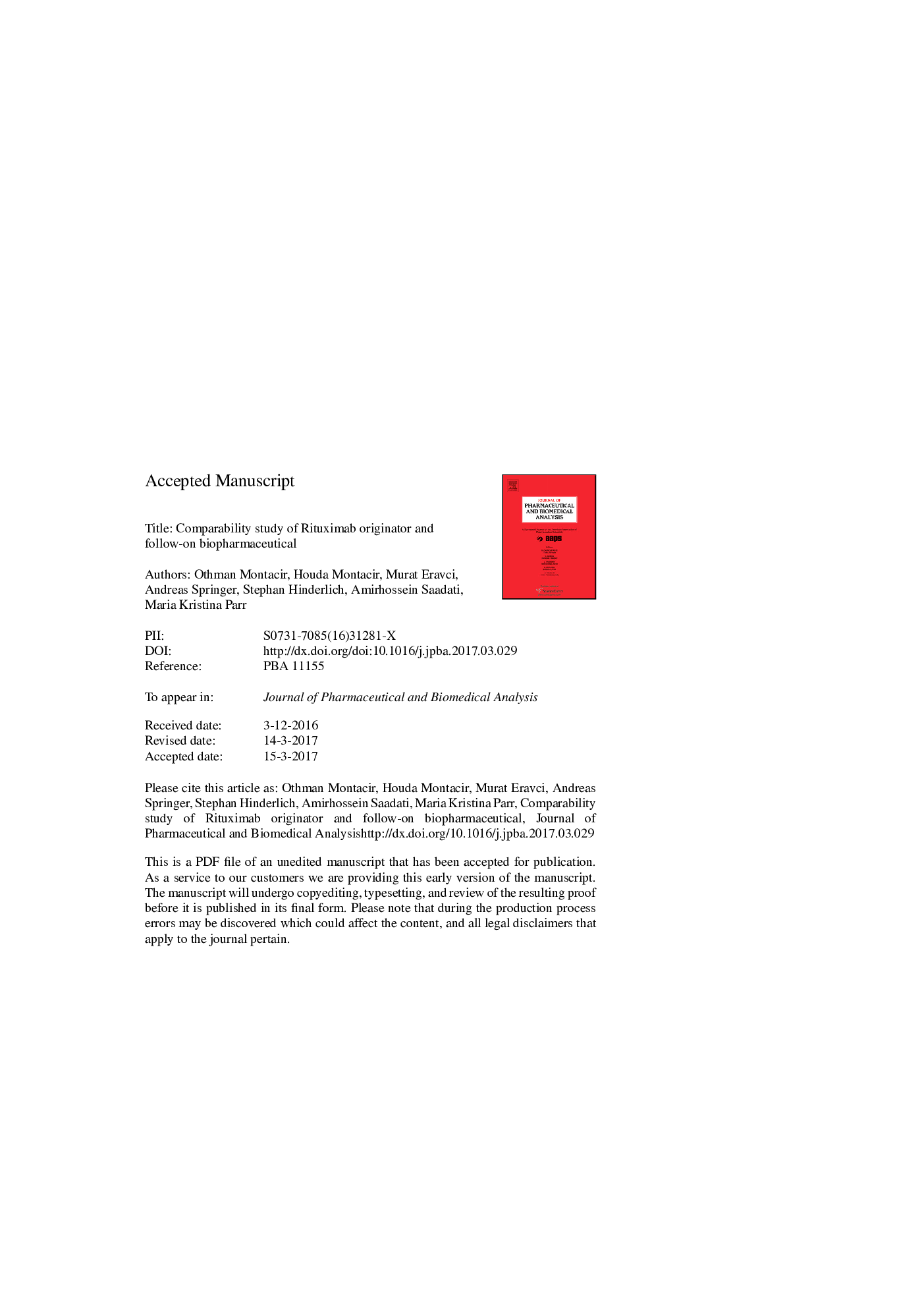| Article ID | Journal | Published Year | Pages | File Type |
|---|---|---|---|---|
| 5138041 | Journal of Pharmaceutical and Biomedical Analysis | 2017 | 21 Pages |
Abstract
Immunglobolin G (IgG)-based biopharmaceuticals are emerging on the pharmaceuticals market due to their high target selectivity in different diseases. In parallel, a growing interest by other companies to produce similar or highly similar follow-on biologics exits, once the patent of blockbuster biotherapeutics is about to expire. In correlation to their complex structure, an analytical challenge is facing the approval of these biosimilars. Health authorities (e.g. FDA and EMA) have issued several guidelines to define critical quality attributes during manufacturing process changes. In the current study, physicochemical characterization using state-of-the-art analytics was applied to analyse intact mass, post-translational modifications (PTMs) and higher order structure of Rituximab and one of its biosimilars. Intact mass analysis, middle-up approach as well as subunit analysis revealed similar glycoforms but additional lysine variants in the biosimilar. The N-glycosylation site was confirmed for both, the originator and the biosimilar. PTMs and higher order structure were confirmed to be similar. A special focus was given to N-glycosylation due to its potential to monitor the batch-to-batch consistency and alteration during the production bioprocess. Comparison of the N-glycosylation profiles obtained from three batches of the biosimilar and the reference product showed quantitative variations, although the N-glycans were qualitatively similar. Furthermore, a head-to-head comparability of functional properties was performed to investigate the impact of glycosylation alteration and PTMs on potency within the biosimilar batches and between originator and follow-on biodrug. The data affirm that the difference is still in the acceptable range for biosimilarity.
Keywords
NLCqTOFTOFGMPCQAIAAIMSDHBCDCRPMIABCTFAFucoseUHPLCDTTACNBiopharmaceuticalEMANDAIMGTPNGasePGluFDACDRsPTMNanoflow liquid chromatographymAbFBSESIC1qCIDIgGFcRnADCCnuclear magnetic resonance2,5-dihydroxybenzoic acidHOSm/zMS/MSamino acidMonoclonal antibodyantibody-dependent cellular cytotoxicityEuropean Medicines agencyCollision-induced dissociationUS Food and Drug AdministrationAcetonitrileTrifluoroacetic acidFormic acidpost-translational modificationIdeSimmunoglobulin GChoNew drug applicationAmmonium bicarbonateChinese Hamster OvaryNMRGood Manufacturing PracticeFunctional propertiesdithiothreitolcircular dichroismTime-of-Flight quadrupole time-of-flightlight chainheavy chainHigher order structurefetal bovine serumcomplement-dependent cytotoxicitySialic acidFTIRMass spectrometryTandem mass spectrometryFourier transform infrared spectroscopyIon mobility spectrometryMALDIMannoseManPhysicochemical characterizationICHComplementarity determining regionsconserved regionvariable region of light chainvariable region of heavy chainRoswell Park Memorial Institute mediumMolecular weightCritical Quality AttributesUltra High Performance Liquid ChromatographyInternational Conference on HarmonisationGalactoseGlycosylationneonatal Fc receptorFc gamma receptorelectrospray ionizationmatrix-assisted laser desorption ionizationiodoacetamide
Related Topics
Physical Sciences and Engineering
Chemistry
Analytical Chemistry
Authors
Othman Montacir, Houda Montacir, Murat Eravci, Andreas Springer, Stephan Hinderlich, Amirhossein Saadati, Maria Kristina Parr,
